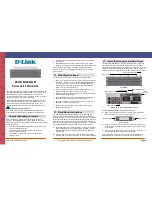
2: Overview
SecureLinx SLC User Guide
15
Protocols Supported
The SLC supports the TCP/IP network protocol as well as:
SSH, Telnet, PPP, NFS, and CIFS for connections in and out of the SLC
SMTP for mail transfer.
DNS for text-to-IP address name resolution
SNMP for remote monitoring and management
FTP and SFTP for file transfers and firmware upgrades
TFTP for firmware upgrades
DHCP and BOOTP for IP address assignment
HTTPS (SSL) for secure browser-based configuration
NTP for time synchronization
LDAP, NIS, RADIUS, CHAP, PAP, Kerberos, and for user
authentication
For brief descriptions of these protocols, see
D: Protocol Glossary
.
Access Control
The system administrator controls access to attached servers or devices by assigning
access rights to up to 128 user profiles. Each user has an assigned ID, password, and
access rights. Other user profile access options may include externally configured
authentication methods such as NIS and LDAP.
Device Port Buffer
The SLC supports real-time data logging for each device port. The port can save the data
log to a file, send an email notification of an issue, or take no action.
You can define the path for logged data on a port-by-port basis, configure file size and
number of files per port for each logging event, and configure the device log to send an
email alert message automatically to the appropriate parties indicating a particular error.
Configuration Options
You may use the backlit front-panel LCD display for initial setup and later to view and
configure current network, console, and date/time settings.
Both a web interface viewed through a standard browser and a command line interface
(CLI) are available for configuring the SLC settings and monitoring performance.
















































